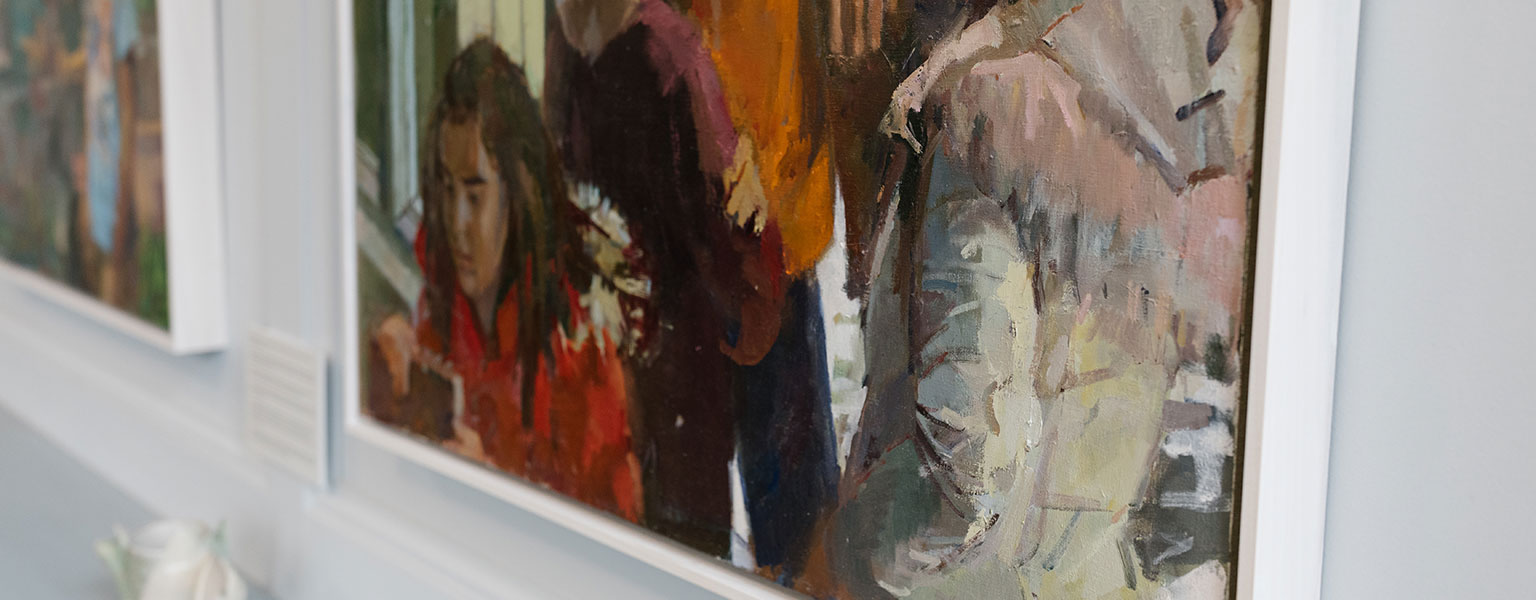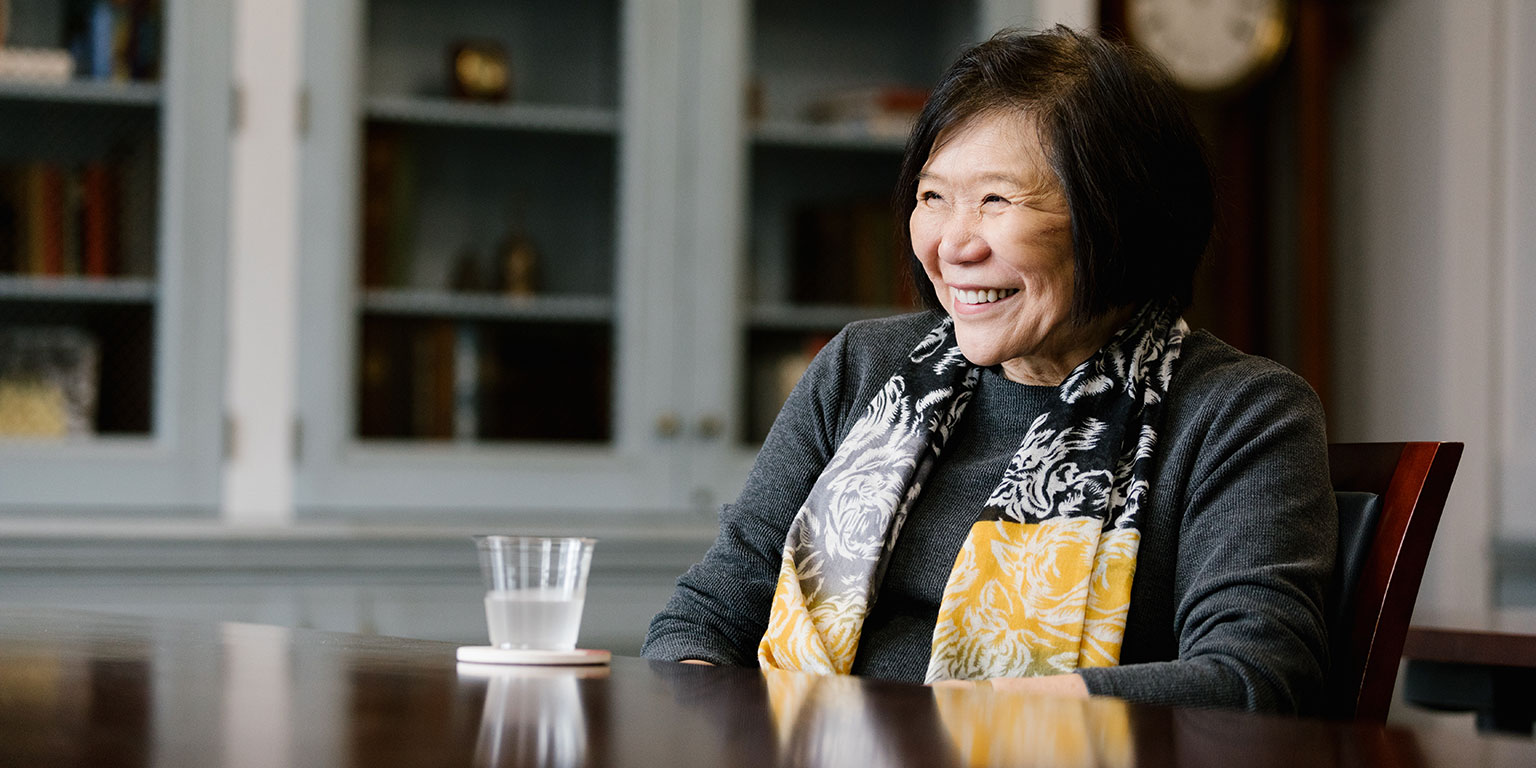By Raymond Fleischmann | Spring 2018
Photography by Anna Powell Denton
The impulse to make art, I think, is one of the central characteristics that makes us human. It’s an impulse we experience from our earliest days, a seemingly inborn compulsion. That’s you, one of my daughters once told me. She was three at the time, and the picture she had drawn was little more than a circle and four wobbling lines. But to her — and to me — it was art, and she had drawn it and described it without hesitation or abash. She simply did. She simply made.
And yet, as adults, so many of us have difficulty discussing art. I don’t get it. I don’t understand it. It’s just a block of color. Discussing art can feel intimidating. It can feel uncomfortable.
But for Emily Sano (B.A. ’66, History), discussing art is a joy. Every industry has its rock stars, and in the world of art curation, Sano is something of a celebrity. Among many other curatorial positions, she served for more than a decade as the director of the Asian Art Museum of San Francisco, a world-renowned institution of more than 18,000 pieces. A second-generation Japanese American, Sano currently serves as the senior advisor for Asian art at the San Antonio Museum of Art, but she recently returned to Bloomington to accept the College of Arts and Sciences’ 2018 Distinguished Alumni Award.
On the day of our interview, Sano admits that she isn’t feeling well. She flew into Bloomington the night before, she explains, and she’s come down with a cold. Her voice is hoarse. She asks for a glass of water and a cup of herbal tea. She touches her throat as if it’s tender there, and indeed her words are soft and careful.
But the rasp of her voice belies her enthusiasm for the topic. Despite her cold, Sano is energetic. Vivacious, even. We talk about art, Japan, the public, and the private, and as she speaks her eyes flash with excitement and energy. Suddenly, discussing art doesn’t feel so intimidating.
Raymond Fleischmann: You arrived at IU planning to become a scientist, but that changed after spending your junior year abroad in Japan. Tell me about some of your memories from that year. What was that experience like?
Emily Sano: For the junior year abroad, I attended a language school called the Inter-university Center for Japanese Language Studies. It was out in a town on the outskirts of Tokyo called Mitaka. It was a marvelous arrangement for the introduction of foreign students to a college campus in Japan. The group of American students who went included both undergraduates and graduate students. The graduates students were largely those both in Chinese art history and in Japanese art history, and it was the first time I had encountered those professions. They were really fun to get to know because they had more to do. For the majors in history and political science, you dealt with libraries and ideas and discussion groups about movements and so forth, but with the art historians, you had actual activities. Museums to go see. Flea markets and antique shops to delve into. It was much more compelling.
Fleischmann: As a Japanese American, was that your first time visiting Japan?
Sano: Yes, and I had not known much about Japanese culture because I grew up in rather modest circumstances in Arkansas. The environment I grew up in was not Japanese at all. There was some attachment to foods, of course, but living in the south, one did not have access to a lot of the fish that is fundamental to Japanese cooking. I did not have a lot of background in what was Japanese. I felt entirely American and entirely foreign in that situation. I came to love it, but it wasn’t something that came naturally to me.





